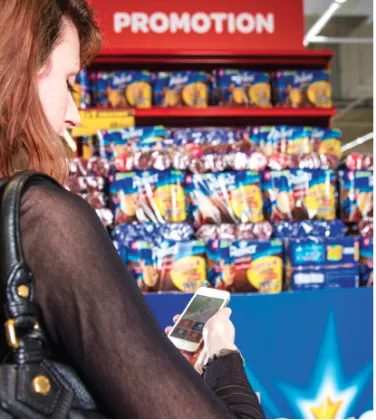
LED-based indoor positioning tech tracks shoppers' location
VLC and LED-based indoor positioning technology is being used in one of CapitaLand’s malls to enable communications between Philips light fixtures and shoppers’ smartphones.
In September 2016, Philips Lighting launched its new Lighting Application Center (LAC) at the Philips APAC Centre in Singapore. With Singapore as the company’s regional hub, Philips’ LAC supports the testing and development of innovative applications for connected and sustainable systems, including conducting an “indoor positioning” technology pilot with regional retail property developer CapitaLand.
Said to be a world’s first in a mall, visual light communications (VLC) and LED-based indoor positioning technology is being used in one of CapitaLand’s malls to enable communications between Philips light fixtures and shoppers’ smartphones.
When a shopper launches an app on his or her smartphone in the mall, the front camera on the smartphone picks up a unique light frequency emanating from Philips lights and this helps to identify the shopper’s location in the mall. This innovative system could facilitate way-finding in the mall and the sending of targeted marketing messages based on the shopper’s location.
Indoor positioning technology
The Philips Indoor Positioning System consists of LED fixtures that not only light up the store with energy-efficient and high-quality light, but also use patented VLC technology to send out a unique code that can be detected with any smartphone camera.
The system also features a proprietary software and cloud solution that identifies the code and determines the exact position of the smartphone on the shop floor. In addition to VLC, which provides the real-time and hyper-accurate (30cm/1ft) positioning needed in the grocery aisle, the Indoor Positioning System also features in-luminaire Bluetooth Low Energy (BTLE) beacons to enable in-pocket notification and tracking of the customer path while the phone is stowed away, without the hassle of additional installation and maintenance that these beacons usually require.
The Indoor Positioning System can support a range of location-based services — for example, way-finding, product finding and personal couponing — that make shopping a more interactive,personalised and enjoyable experience, ultimately driving sales and encouraging brand loyalty.
Indoor positioning can also add value for retailers in terms of offering better service, improving staff efficiency, and assessing shopper traffic/routing. For example, order pickers receive efficient routing instructions, or customer flow data reveals dead zones in the store.
Shopper survey on location based services
To find out shoppers’ reaction to the technology, Philips commissioned research among 3,000 shoppers. The objective was to understand what shoppers value in retailers’ store apps and what location-based services should be included in these apps. Results of the research revealed that:
-
There is a major opportunity for retailers to significantly increase shopper engagement by offering personalised, ‘right place, right time’ location-based services that are truly relevant to the needs and wishes of shoppers.
-
Integrating location-based services will unlock the power of store apps, increase usage and improve the shopping experience, as well as enable more efficient and effective store operations.
-
In the Grocery segment, those surveyed preferred location-based services that help them to save time or money. In this segment, Philips also identified an opportunity for reward-based ‘gasification’, adding an element of fun and social entertainment to the shopping experience.
-
In the DIY segment, shoppers preferred location-based services that help them to get the right product, good assistance and advice.



















 Advertise
Advertise


